Military Knowledge: Shahed-238 Suicide Drone; Advanced Version Of Shahed-136 Equipped With Jet Engine
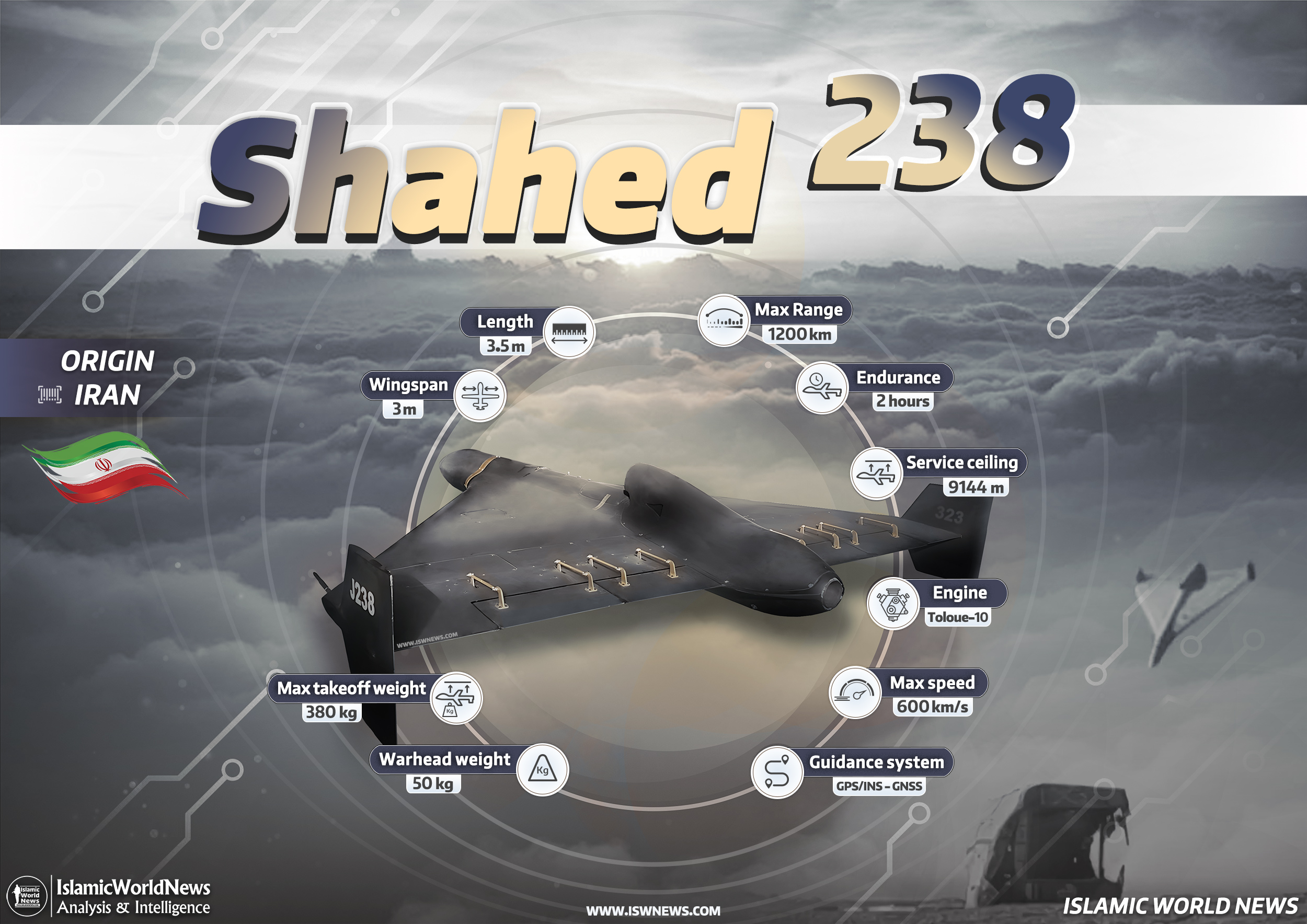
The Shahed-238 suicide drone is an advanced version of the famous Shahed-136 suicide drone, equipped with a jet engine. The offensive capabilities of this drone have been significantly upgraded.
The Shahed-238 suicide drone was first unveiled informally in October 2023 in the Parchamdar (Flagship) Documentary. This drone has a similar platform and the same dimensions to the Shahed-136, but the fundamental difference is the use of a mini-turbojet engine instead of a piston engine.
The Shahed-136, despite its low radar cross-section (RCS), due to its piston engine, low speed, and distinctive loud noise, provided the enemy’s air defense systems and even ground forces with enough time to identify it. However, the use of a turbojet engine in the Shahed-238, while increasing the speed and reducing the noise, along with the drone’s specialized airframe, provides much better protection against heavy machine guns and anti-aircraft cannon, improving the overall success rate of the drone.
Read more: Military Knowledge: Shahed-136 Loitering Munition
Examination of the available turbojet engines produced in Iran, as well as images of the Russian version of this drone from the Ukraine war, suggests the likelihood of using the Toloue-10 engine on the Shahed-238 drones.
The Tolou-10 turbojet engine with a thrust of 1100 to 1200 Newtons increases the speed of the Shahed-238 to 500 to 600 kilometers per hour.
The change in propulsion and engine design increases the weight of the drone. The piston engine MD550 or a similar engine used in the Shahed-136 weighs 17.59 kilograms, while the Toloue-10 turbojet engine weighs around 20.5 kilograms. Additionally, the placement of the micro-turbojet engine within the airframe reduces the space available for carrying fuel. Modifications have also been made to the upper part of the fuselage to accommodate the air intake, which further increases the weight and reduces the drone’s fuel carrying capacity. The fuel type has also been changed from gasoline to Jet-A, primarily due to the fuel requirements of the new engine.
All of these factors, in addition to the increased speed, mean a reduction in the endurance of this drone. It is worth noting that with the changes made, the maximum takeoff weight has increased from 250 kilograms to 380 kilograms.
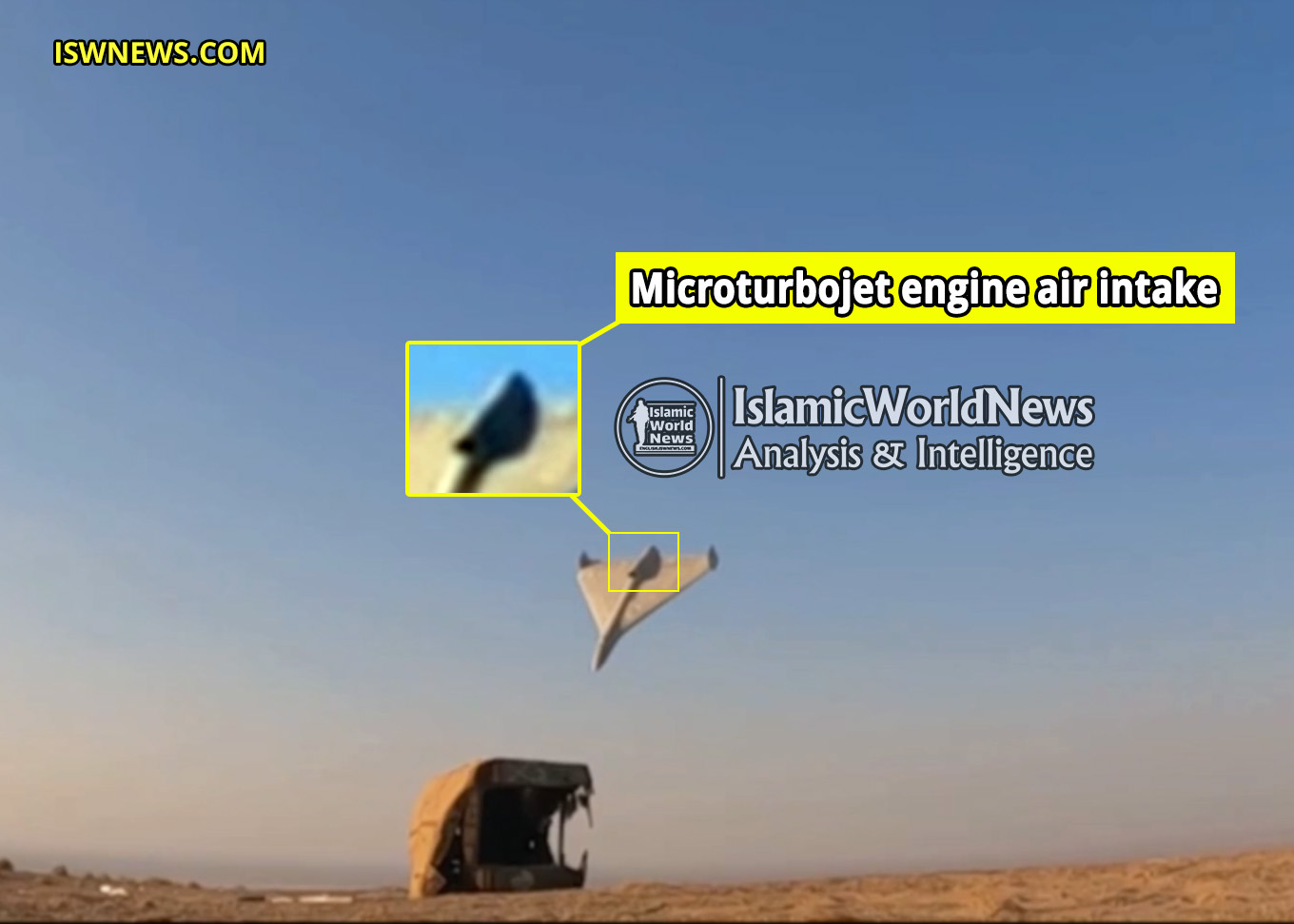
This is not the first time the Toloue-10 engine has been used in Iranian drones. In the past, the Toloue-10 engine had also been used on the Shahed-191 drone.
Read more: Military Knowledge: Shahed 171 (Simorgh) And Shahed Stealth Drones Family
The use of a jet engine, while turning the Shahed-238 into a fast suicide drone, also has its disadvantages. The piston engine of the Shahed-136 has a very low thermal signature, which made it difficult for infrared-guided missiles like shoulder-launched missiles to lock onto the drone. However, with the change from a piston to a jet engine, more heat is generated, making it easier for infrared-guided missiles to lock onto the drone.
Shahed-238 variants:
The jet-powered Shahed-238 suicide drone has been displayed in three classes so far: a basic and standard model, a model equipped with an imaging infrared (IIR) seeker in the nose, and a model (possibly) equipped with a passive anti-radar seeker.

The standard version of the Shahed-238 drone, like the Shahed-136, is equipped with inertial and satellite guidance and is used to attack fixed ground targets.
The model equipped with a thermal seeker is guided by inertial and satellite navigation to the target area and uses the seeker in the final dive phase to select and lock onto the target. The use of the imaging infrared seeker in the nose significantly increases the accuracy and allows the drone to be used against moving targets as well.

The model equipped with a passive anti-radar seeker is used to suppress the enemy’s radar systems. In this version, the drone enters the target area using inertial and satellite guidance, and then the anti-radar seeker, after detecting radar signals, locks onto the enemy’s radar systems or radio towers and attacks them.

It should be noted that the leaked documents show that a drone similar to the Shahed-238, which has been supplied by Iran to Russia and is being produced in that country, is known as the M-237 in the Russian Federation.
After the release of these documents, due to the presence of thermal seekers in the Russian drones, some people mistakenly thought that this drone was a new and different version of the Shahed-238, and therefore the name of the Iranian drones equipped with thermal seekers is also Shahed-237. However, it should be noted that according to the official information published by Iran, the official name of all versions of this drone is the Shahed-238, and only the exported or licensed version is known as the M-237, which can be renamed again in the destination country. Changing the name of exported weapons is a common and normal practice in Iran’s military industries.
All the information published in these documents is almost completely consistent with the information presented on the banner of the Shahed-238 drone at the Iranian National Aerospace Park. But an interesting point that was not available before is that the thermal seeker-equipped version of this drone, in addition to the ability to attack ground targets, also has the ability to attack air targets such as drones. The leaked document shows that the Shahed-238, or the M-237, has locked onto a US MQ-9 Reaper drone.

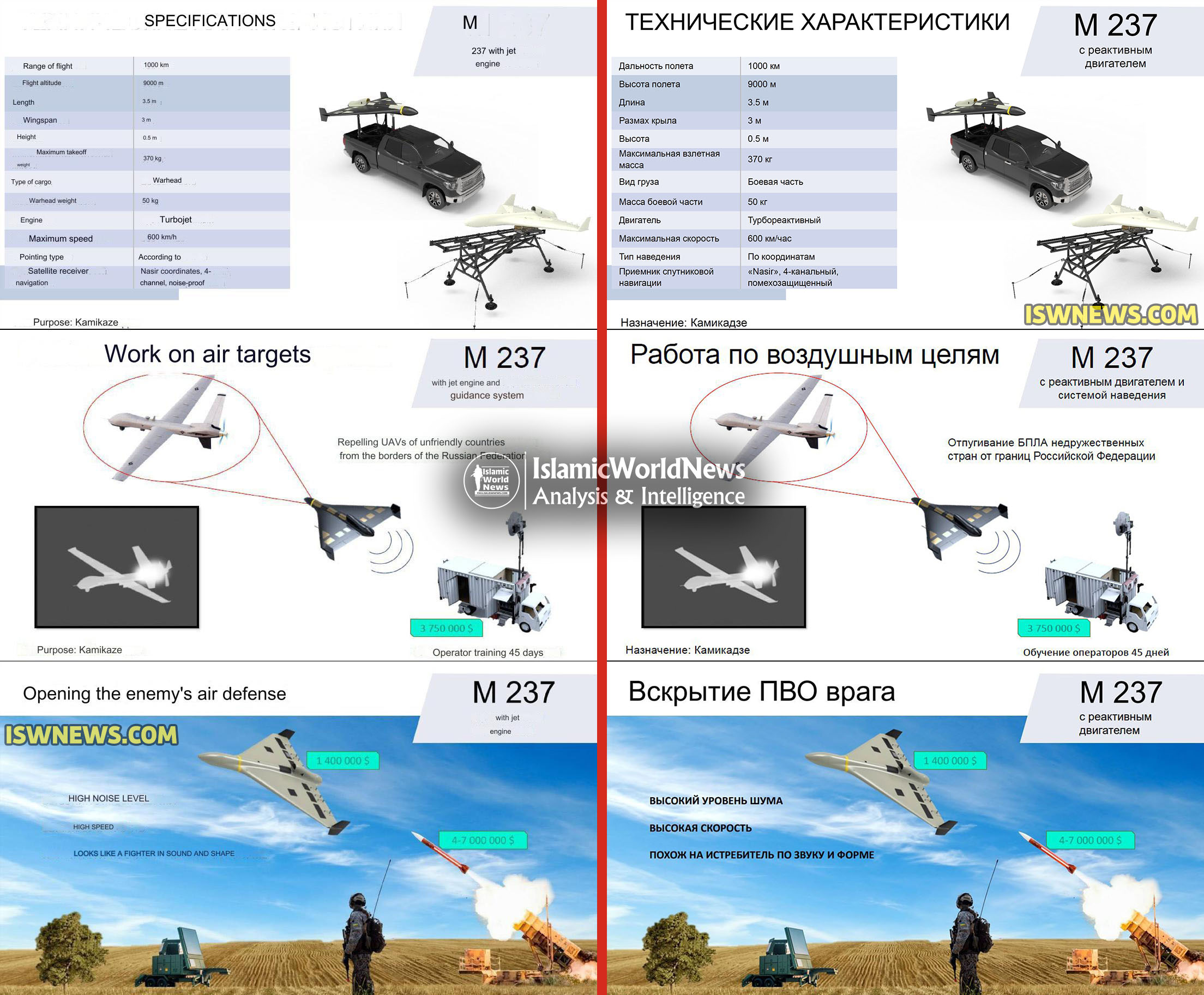
In addition to all the mentioned models, there is another version of the Shahed-238 drone that has been displayed in one of the promotional videos, but has not been exhibited in any exhibitions so far and no information about it is available. In this model, the Shahed-238 is equipped with an electro-optical camera under the nose. One can speculate that the features of this drone are similar to other Shahed-238 models, and the only difference is the version of camera. Therefore, this model, in addition to the capability of being a suicide drone, also has reconnaissance and surveillance capabilities, and helps the operator in selecting visual targets.

Due to the use of a jet engine and increased power, the flap actuators (high-lift devices) also need to be reinforced. For this reason, the Shahed-238 uses eight actuators on the wings, while the Shahed-136 had four actuators on its wings.

According to the available information, the maximum takeoff weight of the Shahed-238 drone is around 380 kilograms, and it is equipped with a 50-kilogram warhead.
The launch and take-off method of the Shahed-238 drone is similar to the Shahed-136. This drone can be launched with the help of a vehicle or using a rocket booster (JATO). There are also speculations about the launch of this drone from fighter jets, which, given the limitations of this task, will most likely remain speculative. However, if this is true, the limitation of the reduced range of this drone compared to the Shahed-136 model will also be eliminated.
Specifications of Shahed-238 suicide drone:
Type: Suicide drone
Country of Origin: Iran
Unveiled: 2023
Length: 3.5 meters
Wingspan: 3 meters
Engine: Toloue-10 jet engine
Range: up to 1200 km
Speed: up to 600 km/h
Impact speed: + 700 km/h
Flight ceiling: 30 thousand feet (9144 meters) (equivalent to Shahed-191)
Flight endurance: 2 hours
Guidance system: GPS/INS – GNSS
Warhead weight: 50 kg
Max take-off weight: 380 kg
Launch platform: JATO or vehicle-assisted
Landing type: With parachute

More images of Shahed 238 suicide drone:
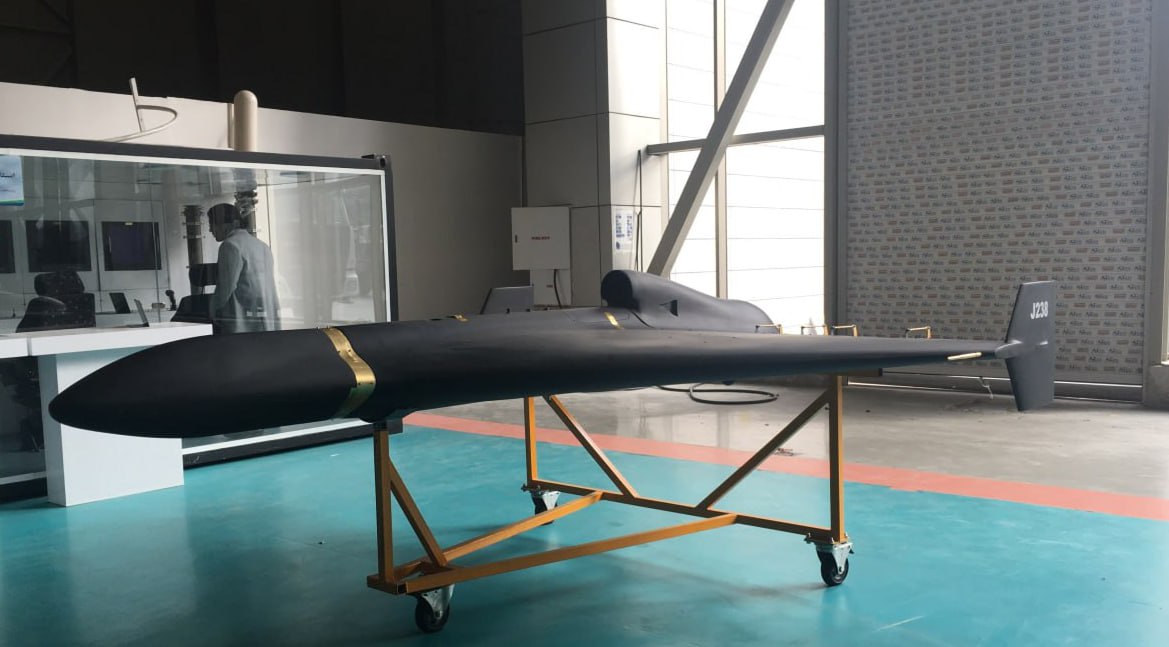

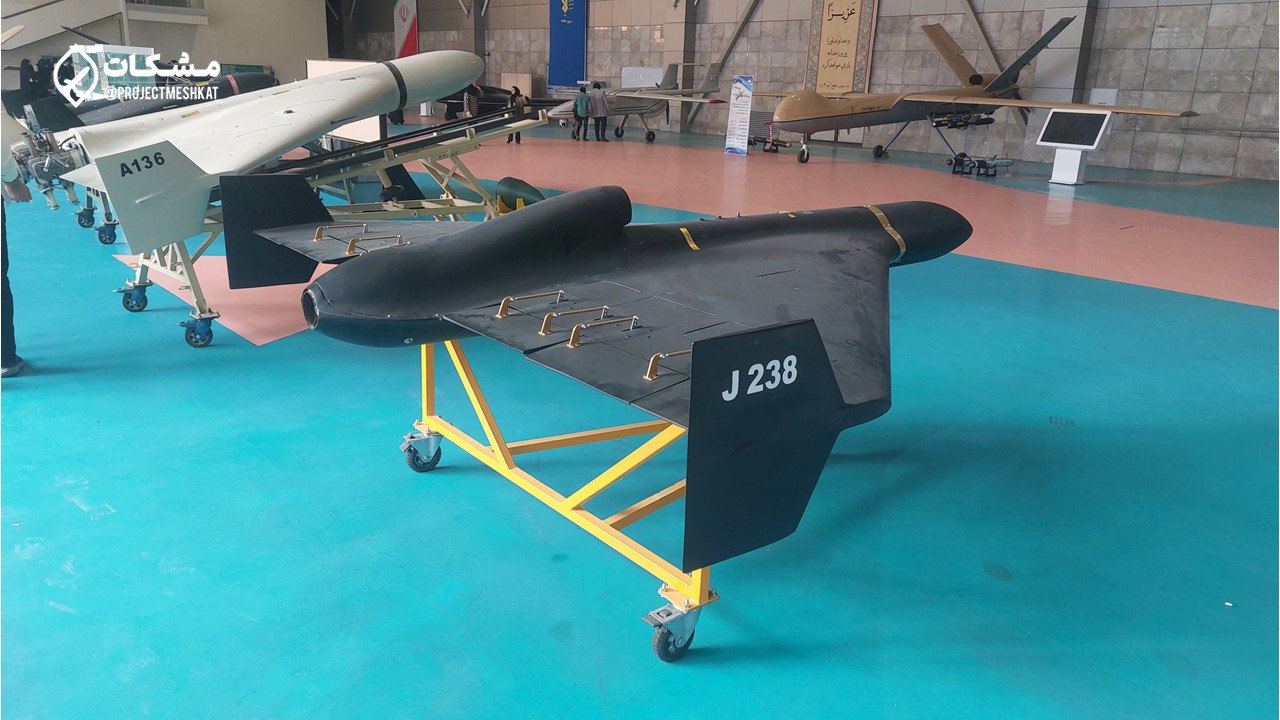

Shahed-238 posters in Persian, Russian, Chinese, Arabic and Hebrew:
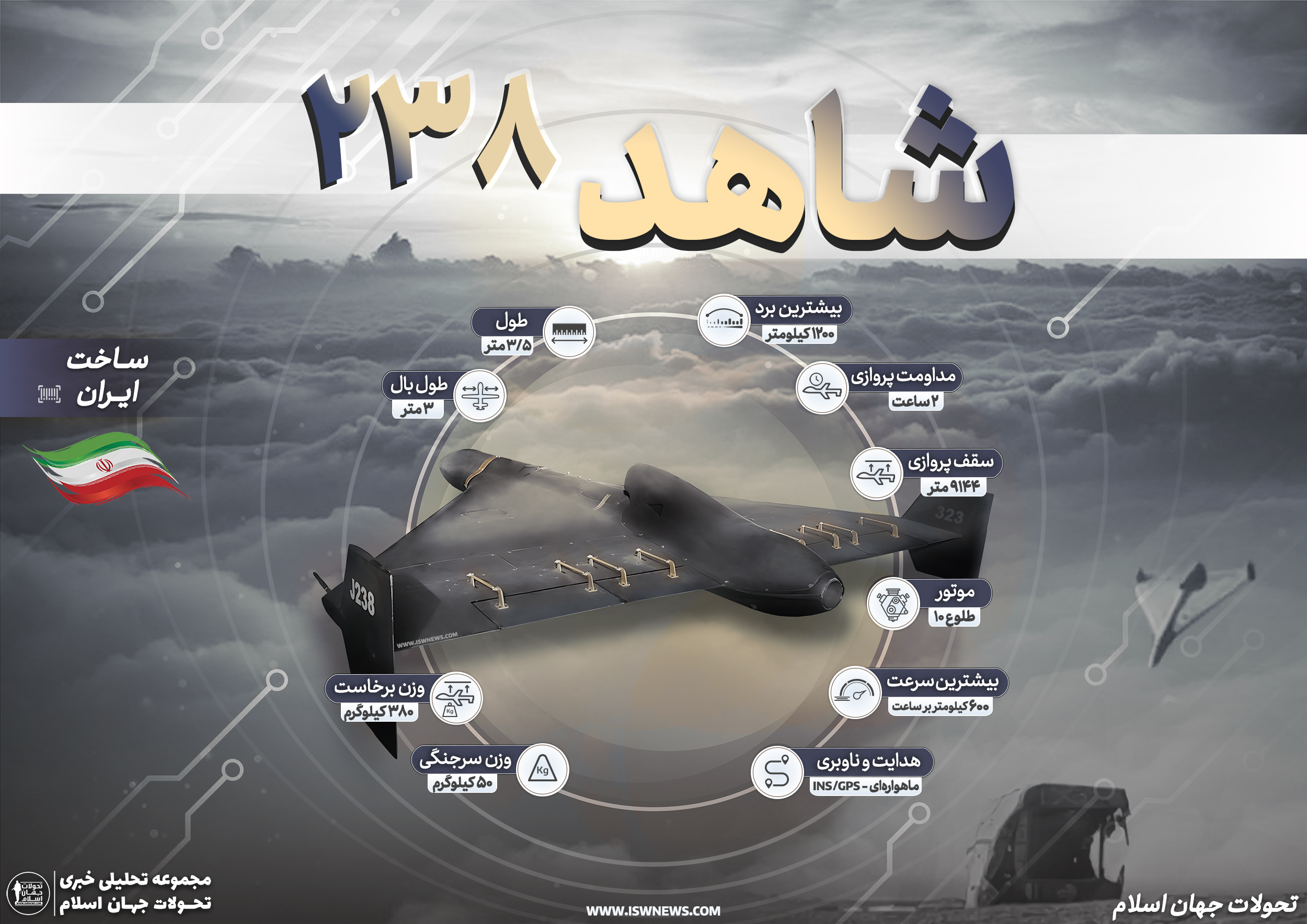
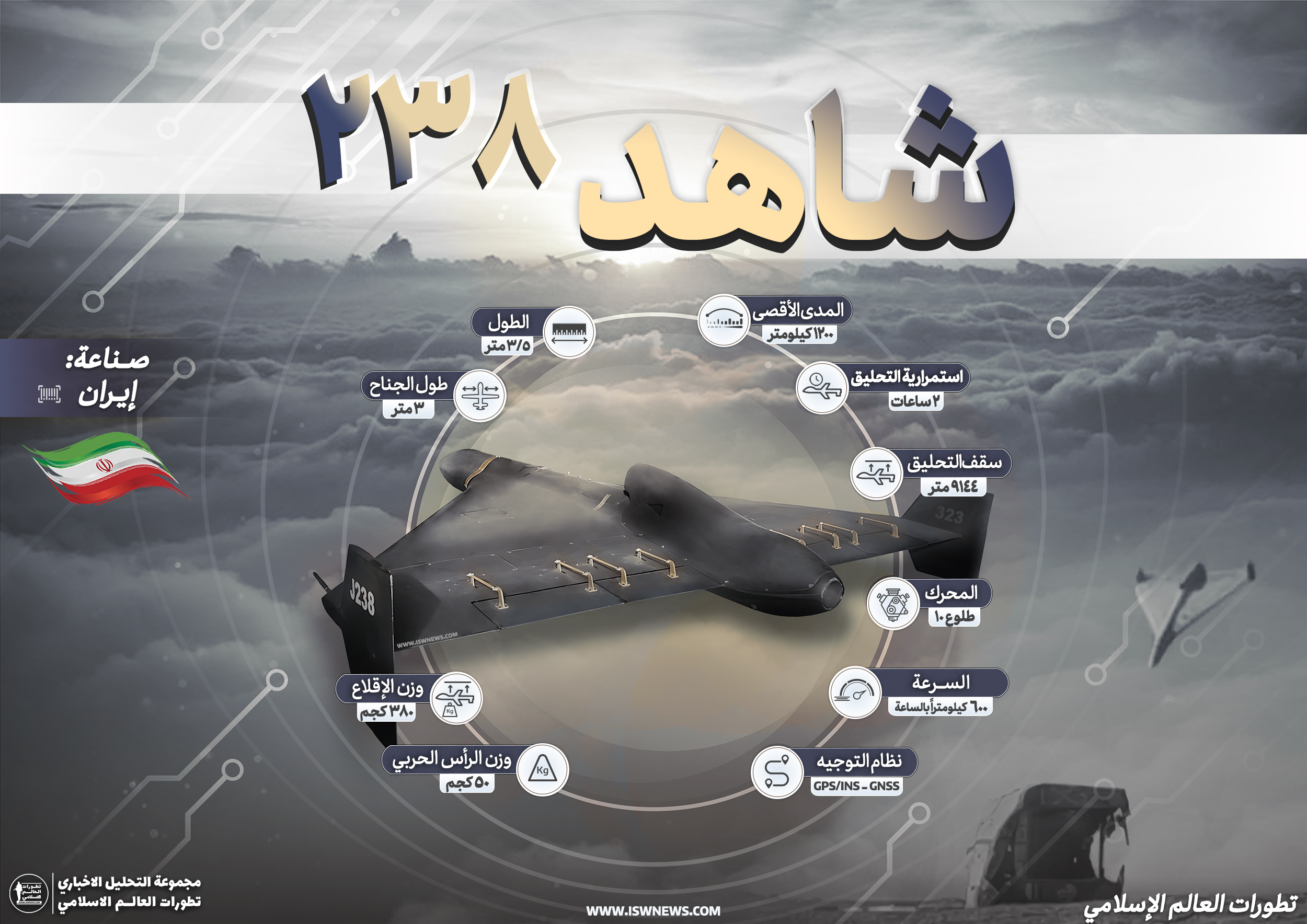


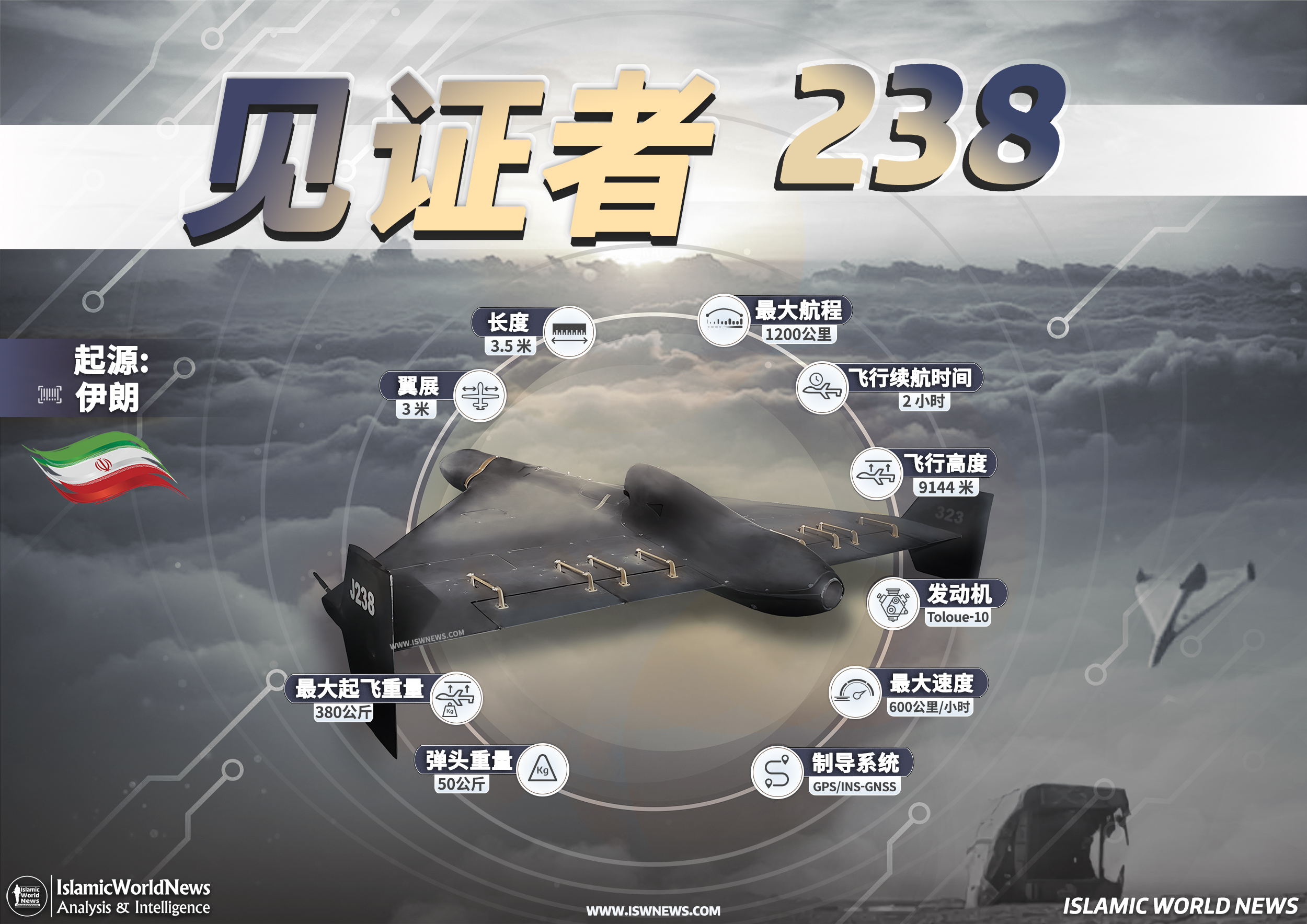




Comment